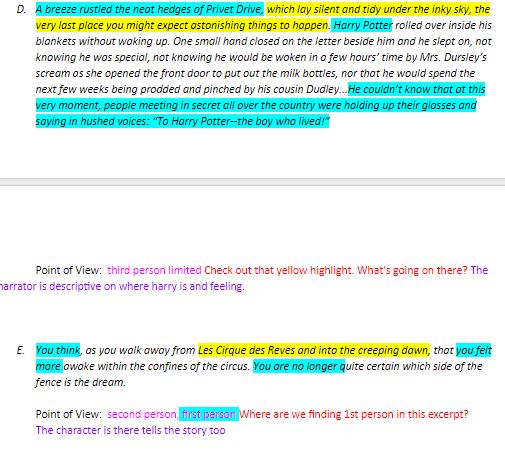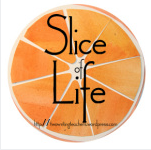The Gradeless Classroom: A Feedback Hack
As the school year settles into full swing and I find myself more and more immersed in the planning, creating, assessing, and reevaluating of the daily flow of my lessons, I start to feel the pressure of feedback building up on me. I know that the value of learning in my gradeless classroom is much higher than it used to be. I believe that the feedback I give my students is making them into more successful ELA students. But there are so many days I look at the towering pile of work that requires feedback, and I just feel completely inadequate. There are not enough hours, not enough patience, not enough me to go around for all of them. Some days it feels like it would just be so much easier to give a ten-question multiple choice test, run it on the Scantron or through Schoolnet, and call it good.
I think these things in my moments of weakness, but I know that I could never be satisfied with that type of assessment for the deep learning I want to happen in my classroom. I know that students don't grow from the answers on multiple choice tests. I know that they need my guidance much more than they need a correct answer.
We have been working on point of view over the past few days, and my students completed a practice assignment on Google Classroom. So, I sat down this morning during my planning to start "feed-backing" the papers (I don't even call it grading anymore). My process usually looks something like this:
I gave feedback to all 17 kids in my second period class in a space of about 15 minutes. There were only one or two mistakes that I ended up typing a new comment for. I was so excited I ran into the hallway looking for someone to tell (there was no one around). I can't believe I never thought to do this before!
I will definitely be feed-backing papers like this from now on, and creating a database of comments to pull from in the future. I think this will help solve several problems I always run into with feed-backing papers.
I think these things in my moments of weakness, but I know that I could never be satisfied with that type of assessment for the deep learning I want to happen in my classroom. I know that students don't grow from the answers on multiple choice tests. I know that they need my guidance much more than they need a correct answer.
We have been working on point of view over the past few days, and my students completed a practice assignment on Google Classroom. So, I sat down this morning during my planning to start "feed-backing" the papers (I don't even call it grading anymore). My process usually looks something like this:
I add my feedback in red text and use different colored highlights to point out places in the text that students need to pay close attention to. Then I ask students to leave my feedback but make their corrections in a new color. This way, the work becomes a conversation. We see how the feedback the student is given helps them to arrive at a deeper understanding, or we see where misconceptions continue. We may do this back and forth two or three times before we arrive at a satisfactory product. This "silent conversation" becomes a teaching tool and a visual record of the student's path to mastery.
As you can see from the picture, this student is not quite at a mastery understanding. We are still in the learning stages about why 2nd person narration pops up so frequently, and what it does for us as reader, as well as what it shows us about the relationship of the narrator to the story and to the reader. Long story short, at the end of 50 minutes, I had feed-backed about 11 papers. I felt overwhelmed and frustrated, and I was starting to take out my frustrations on the papers of my students. As I was working, I noticed that I was typing the same comment time and time again. This made me angry. I was sick of typing the same things. And then I realized.
I was typing the same thing over and over. Why did I need to type the same thing again and again? I didn't! I needed a master copy, a database of comments. So for the next ten papers or so, I typed my comments on the paper, but I also opened a blank document and copied and pasted the feedback into it. After those papers, I had seven comments that pretty much covered all of the errors I was seeing.
Then I went on to my next set of papers. I opened my comments database in a window next to the papers, and proceeded to copy and paste the comments into the papers, like so:
I will definitely be feed-backing papers like this from now on, and creating a database of comments to pull from in the future. I think this will help solve several problems I always run into with feed-backing papers.
- Solution 1: Turnover time. Even if I, by some miracle or Divine Providence, am able to spend my entire planning period working on giving feedback, I can rarely get through more than one class of papers unless the assignment is super-short. With this approach, I could probably get through sets of papers from all of my classes in one planning period.
- Solution 2: I run out of patience with students making the same mistake over and over. I get shorter and snippier with my comments proportionate to the number of times a mistake is made. Copying and pasting the comments makes it much less likely I will change my tone as I get grumpy!
- Solution 3: The first ten papers I pick up get really detailed, thoughtful commentary. The poor kids whose papers are close to the end don't get the same quality of feedback as the first ones. If I copy and paste those thoughtful, detailed comments into the database, all the kids will be receiving the same high quality feedback, not just the first ones I picked up.
- Solution 4: I might actually have time to do something else, like read a book, or write this blog post!
This is the 7th post in my Gradeless Classroom series. All posts in the series are tagged with "The Gradeless Classroom." I'd love to connect with you! Find me on social media: Facebook (Cristi Lackey Julsrud), or follow me on Twitter (@Mrs_J_of_EAMS). Thanks for reading!



I like this idea! I often have a previous grade reflection or two open so that I can copy and paste comments that are really relevant, but creating a data base is something that could be useful on future assignments also.
ReplyDeleteOne thing I even tried was numbering my comments on a sheet and always having it available for the kids, so they new comment # 3 meant that their topic sentence did not relate back to their main thesis.
ReplyDeleteknew not new, :) - five in the morning and giving feedback too!
DeleteIt's great to have these "aha moments!" When I read Assessment 3.0 by Mark Barnes a couple of years ago, I decided the spreadsheet of comments was the first thing I'd do. Now I have a spreadsheet with various tabs on the bottom for all the different types of feedback I put in the grade book (in place of grades). Enjoy creating the clearinghouse of comments with each new assignment! I'm still adding to mine!
ReplyDeleteThis comment has been removed by the author.
ReplyDeleteI love this hack... The perfect antidote to comments that get "shorter and snippier"! Can't wait to give it a try. Thank you.
ReplyDeleteI like the idea of a data base; however, if several of the students are making the same mistakes that signifies mini-lesson to me. Let the students drive the curriculum. I would probably add another document open listing errors and then adding names to the lists. That could be used for mini lessons or station learning that is more individualized. For example one group may need work with writing hooks, while another might be working on varying sentence structure, and a third could focus upon avoiding repetitious vocabulary or details.
ReplyDelete